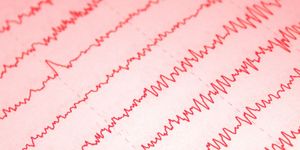"Contagious" Aging Halted for Organ Recipients
The perennial issue facing organ transplantation is the shortage of viable organs. This scarcity often results in prolonged and potentially deadly wait times. However, a ray of hope was presented by Maximilian J. Roesel at the 2023 European Society for Organ Transplantation Congress. New findings suggest that a class of drugs called senolytics may be vital for increasing the number of organs available for transplantation.
As we age, so do our organs, and this aging process can pose challenges for both donors and recipients. When older organs are transplanted, it can lead to complications.
Roesel explains, "Donor age plays a crucial role in the success of transplantations, with recipients of older organs facing worse short- and long-term outcomes." These outcomes include advanced physical impairments and even impaired brain functioning. He also stresses, "Already, most organs that are transplanted come from donors older than 50 years." The culprit behind these issues is thought to be induced senescence, a biological mechanism linked with aging and age-related diseases.
Senescence occurs when environmental stressors damage cells to the point where they cease to duplicate. These senescent cells secrete inflammatory products known as senescence-associated secretory phenotype (SASP), which tend to accumulate in aged organs. This SASP accumulation can lead to a multitude of complications for organ recipients.
Enter senolytics, a cutting-edge class of drugs designed to target and eliminate these senescent cells. Ongoing Clinical trials are investigating senolytics as possible treatments for neurodegenerative and age-related illnesses. Roesel and colleagues from Brigham and Women’s Hospital of Harvard Medical School explored the rejuvenating effects of senolytics in mouse heart transplant trials.
First, by utilizing donors of varied ages, they found that the mice that received organs from older donors exhibited a buildup of SASP in the lymph nodes, muscles, and especially the liver. In the first two hours after the transplant, there were already changes in mitochondrial DNA, a critical indicator of cell energetics related to SASP synthesis.
Second, "Donor mice were treated with a single dose of Dasatinib and Quercetin (Senolytics) before the hearts were procured and used for transplantation," describes Roesel. The apparent transfer of senescence from older donors was significantly reduced by senolytic treatment, resulting in improved physical fitness and changes in mitochondrial DNA expression for organ recipients.
This ground-breaking study could revolutionize the field of transplantation; the findings might expand the potential applications of senolytics and pave the way for the reinvigoration of the organ donor pool.
Sources: EurekAlert!, Aging, ESOT, Nature Medicine









